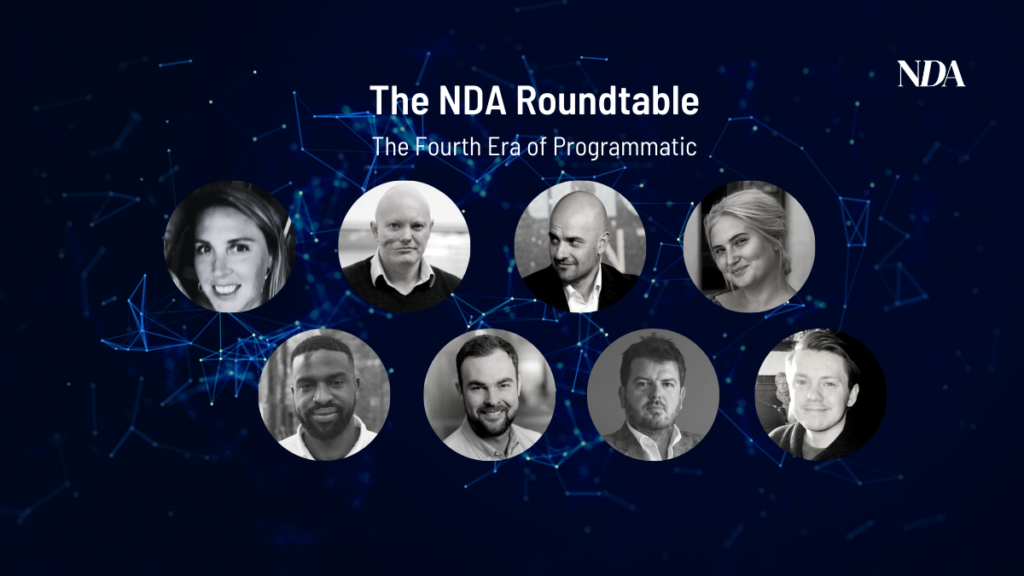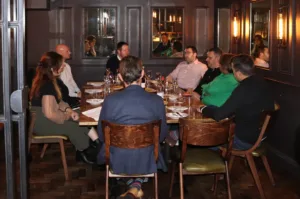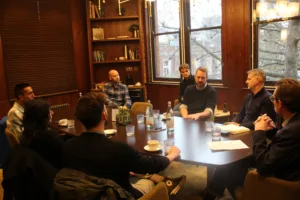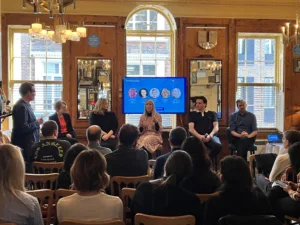NDA recently partnered with Talon Outdoor to host a roundtable discussing the fourth era of programmatic: programmatic out-of-home. In this article, we hear from attendees Celine Saturnino, Chief Operating Officer at Total Media; Tom Harrison, Head of Programmatic and Display at Manning Gottlieb OMD; John-Paul Major, Head of Product Growth at Mediacom; Akama Davies, Global Practice Lead for Digital OOH at Xaxis; Simon Jenkins, Chief Strategy Officer at VCCP Media; Emma Jensen, Programmatic Director at Digitas UK; Josko Grljevic, Chief Transformation Officer at Talon; and Adam Pace, Consultant at Talon.
Programmatic out-of-home (OOH) is still a relatively new avenue that’s available to advertisers, but it’s one that is being viewed with great excitement around the industry, particularly with the entire OOH market on course to grow by 57% this year, despite its early pandemic struggles.
“It gives a great opportunity for brands, particularly coming out of COVID, who have been quite hesitant over the last 12 months about their expenditure, to get back into the market in new and interesting ways,” said Total Media’s Saturnino.
“We’ve had a lot of brands coming back and testing the waters by using different types of data to activate. And that’s been great for them to be able to get back in, even in a smaller way than they might have liked to before.”
Mediacom’s John-Paul Major is excited about the opportunity that programmatic out-of-home offers to clients – an opportunity that not many of them are currently aware of.
“For me, it’s about taking legacy media, with the great benefits it has as a media channel already, and then bringing the data and tech in there and seeing how you can grow it,” said Major. “The really exciting bit is in the areas that clients sometimes don’t see as an opportunity to bring data in at that level. So, just creating the stories for clients and enabling them to activate in ways they didn’t think they could.”
Meanwhile, Talon’s Pace has been “encouraged by the uptake from clients” since joining Talon as a Consultant last year. “It’s going to be super interesting to see what everyone’s take is on how things might play out and what we can do,” he added.
Programmatic activation
Out-of-home being delivered more and more through automation is “sharpening what was, once upon a time, quite a blunt media”, according to VCCP’s Jenkins.
“Digital out-of-home inherently ought to give us better ability to measure, because your impacts are delivered on a much more granular basis – whether that’s by audience, time of the week, or by time of day,” he explained. “You’ve got better quality data inputs. It’s a lot more scientific now, we can do more intelligent things. And we test and learn, which is something that out-of-home would have struggled with a while back.”
Talon’s Grljevic is in agreement, highlighting that “programmatic and automation is showing that there’s a different way of doing things”.
“If you aggregate data, then make it available in real-time, then you automate a lot of the stuff that we used to do manually, and then you overlay it with data, you have the ability to execute quickly. Therefore, if you take out the cost and all the other stuff that comes with it, you’re almost on par with all the other things online, with mobile and TV,” said Grljevic. “If they can be executed in that way, why can’t out-of-home? And, if I can execute out-of-home in an online channel, then why can’t I grow the size of the pie? That’s, ultimately, what everyone in the out-of-home industry wants to do. They want a bigger slice of the pie.”
Grljevic believes that, as long as the industry has that goal, then advertisers would be more willing to invest. “Once we start getting our stuff together on the supply side, the agencies and clients are going to say, ‘okay, maybe I can just buy as an audience’, and ‘if I buy as an audience, then I can optimise, pay a higher CPM, but get a much better return on my investment’,” he explained. “It becomes a collective strategy, as opposed to doing a bit of out-of-home, a bit of mobile, a bit of social.”
Despite the benefits of bringing programmatic into out-of-home, Manning Gottlieb’s Harrison warned that “we need to be careful that we don’t repeat some of the mistakes we’ve made with other programmatic channels”.
“Out-of-home is a brilliant medium, but it’s a one-to-many medium, not a one-to-one medium, and we shouldn’t forget that,” he added. “We need to take the best things of programmatic, treat them carefully, and then apply them to what is quite a different market.”
Learning from our mistakes
To ensure that we don’t repeat these mistakes, Xaxis’ Davies believes that there are a couple of people that need to have their voices heard as programmatic out-of-home evolves.
“The link between demand and media owners needs to be closer than other channels, because of the consolidation of a few big players compared to digital display,” said Davies.
“The other voice that I always hear is a bit absent from the conversation is the traders themselves. The reality with outdoor is that it can be more challenging to buy than any other media currently, because of simple things, like having to upload multiple different assets because HTML5 isn’t supported. These are going to create points of friction that we can learn from pretty quickly because, even if we strategise the best campaign, or have the most granular level of targeting, if the traders get frustrated with that, they’re going to seek other channels or opportunities to divert that investment away from.”
Speaking from the point of view of the traders, Digitas’ Jensen thinks it’s important that they ensure that they’re not segmenting their campaigns just for the sake of it, and making sure to put the client first.
“We’re seeing now that there are a lot of publishers and vendors that have their own DSPs, and that’s great to a certain degree, but I don’t want my traders segmenting their campaigns across five or six different DSPs,” Jensen explained. “When talking about the value of programmatic out-of-home, it can be an omnichannel and, if the clients don’t have DMPs available, then we need to really rely on the DSPs for the audience that they’re able to create for us.
“That’s one point that my traders and I have been talking about: making sure that, when we do go down the route of buying programmatic out-of-home, it really works for the client, and we’re not fragmenting just because we need to work with a certain publisher.”
So, the future is bright for programmatic out-of-home, but we have to make sure that we take notice of what has come before and the issues that online programmatic is currently facing around privacy and identity.









